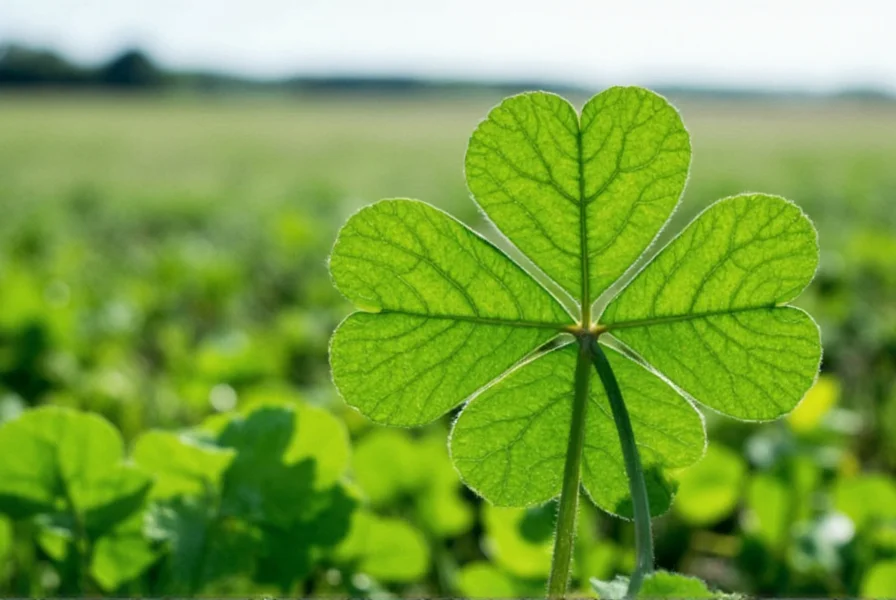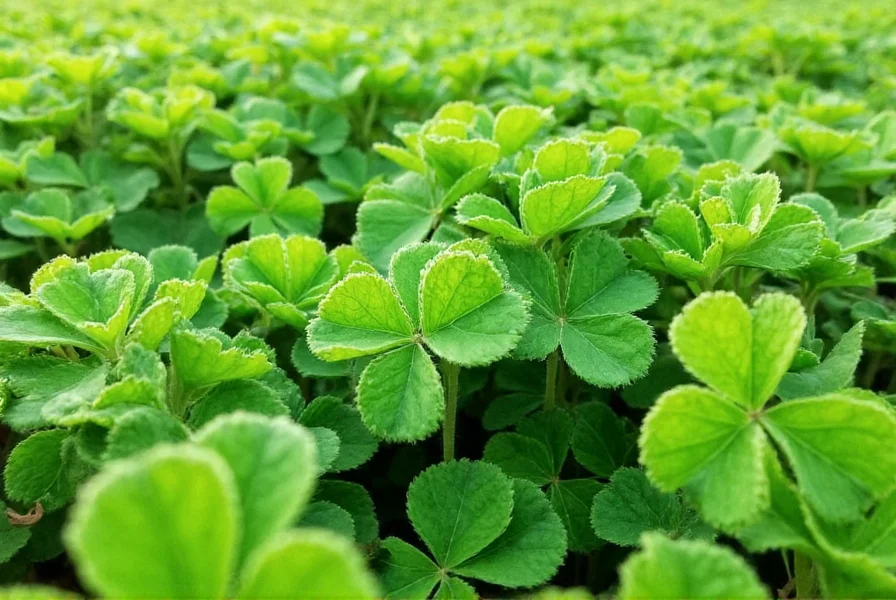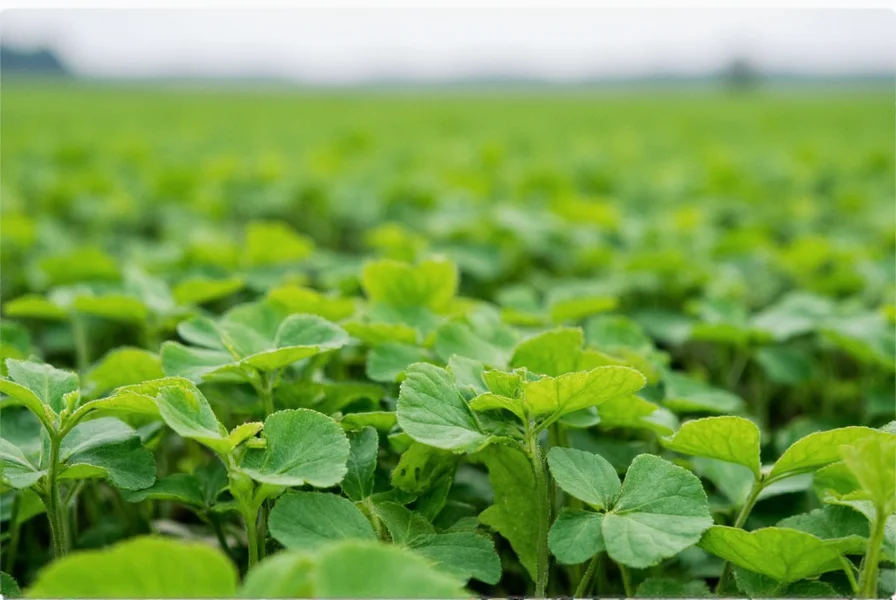Clover farming represents a sustainable agricultural approach that benefits both the environment and farm productivity. As a legume, clover possesses unique nitrogen-fixing capabilities through symbiotic relationships with rhizobia bacteria in its root nodules, eliminating the need for synthetic nitrogen fertilizers. This natural process not only enriches the soil but also supports crop rotation systems that maintain long-term land health. Farmers increasingly incorporate clover into their operations due to its versatility—it serves as high-quality forage for livestock, prevents soil erosion, and attracts beneficial pollinators essential for ecosystem balance.
Understanding Clover Farming Benefits
Clover farming delivers multiple agricultural advantages that extend beyond simple crop production. The most significant benefit lies in nitrogen fixation, where certain clover species can add 100-200 pounds of nitrogen per acre to the soil annually, substantially reducing fertilizer costs. White clover varieties typically fix less nitrogen but spread aggressively through stolons, making them ideal for pasture systems. Red clover, with its deeper taproot system, accesses nutrients from lower soil layers and contributes more organic matter when terminated.
From an ecological perspective, clover farms create vital habitats for pollinators. A single acre of blooming clover can support thousands of honeybees and native pollinators, directly contributing to regional biodiversity. The dense root systems of established clover stands also improve soil structure, increasing water infiltration rates by up to 50% compared to bare soil. This enhanced water management reduces runoff and prevents nutrient leaching during heavy rainfall events.
Clover Varieties for Farm Applications
Selecting appropriate clover varieties is critical for successful clover farming. Different species offer distinct advantages depending on climate, soil conditions, and intended use. The following table compares common agricultural clovers:
| Clover Type | Soil Preference | Climate Adaptation | Primary Farm Use | Establishment Period |
|---|---|---|---|---|
| White Clover | Moist, well-drained | Cool temperate | Permanent pasture, living mulch | 4-6 weeks |
| Red Clover | Loamy, pH 6.0-7.0 | Moderate temperatures | Hay production, soil amendment | 6-8 weeks |
| Crimson Clover | Sandy loam | Warm temperate | Winter cover crop, quick biomass | 3-5 weeks |
| Alsike Clover | Wet, acidic soils | Cold tolerant | Wetland restoration, mixed forage | 5-7 weeks |
When establishing a clover farm, consider your specific agricultural goals. For livestock operations, white clover provides continuous grazing throughout the growing season due to its stoloniferous growth habit. Red clover offers higher protein content for hay production but requires rotation every 2-3 years to prevent disease buildup. Crimson clover works exceptionally well as a winter annual in southern regions, providing quick spring biomass before transitioning to summer crops.
Establishing Your Clover Farm
Successful clover farm establishment begins with proper soil preparation. Conduct a comprehensive soil test at least 60 days before planting to determine pH and nutrient levels. Clover thrives in slightly acidic to neutral soils (pH 6.0-7.0), so lime application may be necessary for acidic soils. Remove existing vegetation through tillage or herbicide application, then create a firm, weed-free seedbed.
Planting timing significantly affects clover farm success. In northern climates, late summer planting (August-September) allows seedlings to establish before winter dormancy. Southern regions benefit from early fall planting (October-November) to avoid summer heat stress. Seed at the proper depth—white clover requires shallow planting (1/8 inch), while red clover seeds should be covered with 1/4 inch of soil. Use a cultipacker after seeding to ensure good seed-to-soil contact.

Managing Clover Farm Operations
Effective clover farm management requires attention to several key practices. First, monitor soil moisture carefully during establishment—clover seeds need consistent moisture for germination but become drought-tolerant once established. Avoid over-irrigation, which promotes weed competition and root diseases. Implement rotational grazing if using clover for livestock, allowing plants to recover between grazing periods to maintain stand longevity.
Pest management in clover farming differs from conventional crops. Clover root weevils and aphids represent common insect challenges, but integrated pest management strategies typically prove more effective than chemical controls. Maintain biodiversity by planting clover in mixtures with grasses and other legumes, which naturally suppress pests. For disease prevention, ensure proper air circulation through appropriate mowing or grazing practices, and rotate clover stands every 3-4 years to disrupt disease cycles.
Harvesting and Utilization Strategies
Clover farms offer multiple harvest options depending on your agricultural objectives. For forage production, time grazing or cutting to coincide with early bloom stage when nutritional value peaks. Red clover hay harvested at this stage typically contains 18-22% crude protein, making it valuable livestock feed. When using clover as a green manure, terminate the stand at full bloom to maximize nitrogen contribution to subsequent crops.
Economic considerations for clover farming reveal significant long-term benefits despite modest immediate returns. While clover seed represents an initial investment, the reduced fertilizer costs and improved soil health typically yield positive returns within 2-3 years. Many farmers integrate clover into crop rotation systems, alternating with cash crops to maintain soil fertility while generating income. Specialty markets for organic clover seed also provide additional revenue streams for established clover farms.

Addressing Common Clover Farming Challenges
Clover farmers frequently encounter specific challenges that require targeted solutions. Weed competition during establishment remains a primary concern—using companion crops like annual ryegrass can suppress weeds while protecting young clover plants. In regions with heavy clay soils, poor drainage can lead to clover stand failure; incorporating organic matter before planting improves soil structure and drainage.
Winterkill represents another significant challenge, particularly for red clover varieties in northern climates. Selecting winter-hardy varieties and ensuring adequate snow cover through strategic planting timing can mitigate this risk. For persistent clover stands, manage grazing intensity carefully—overgrazing weakens plants and allows weeds to invade, while undergrazing leads to excessive stem development and reduced quality.
Environmental Impact and Sustainability
Clover farming contributes substantially to sustainable agricultural systems through multiple environmental benefits. The nitrogen fixation process reduces greenhouse gas emissions associated with synthetic fertilizer production—each acre of clover prevents approximately 10-15 pounds of nitrous oxide emissions annually. Clover's extensive root systems sequester carbon in the soil, with mature stands storing up to 1.5 tons of carbon per acre in root biomass alone.
Water quality improvements represent another significant environmental benefit of clover farming. The dense root networks filter agricultural runoff, reducing nitrogen and phosphorus loads in nearby waterways by up to 70% compared to conventional row crops. This natural filtration system protects aquatic ecosystems while maintaining farm productivity. Additionally, clover farms support higher soil microbial diversity, which enhances overall ecosystem resilience and nutrient cycling efficiency.
Frequently Asked Questions
How much nitrogen does a clover farm typically fix annually?
Most clover farms fix between 100-200 pounds of nitrogen per acre annually, depending on the clover variety and growing conditions. Red clover typically fixes more nitrogen than white clover due to its deeper root system and larger biomass production. Properly inoculated clover plants form symbiotic relationships with rhizobia bacteria that convert atmospheric nitrogen into plant-available forms, eliminating the need for synthetic nitrogen fertilizers in well-managed systems.
What is the optimal planting depth for different clover varieties?
Planting depth varies by clover type: white clover seeds should be planted shallowly at 1/8 inch depth due to their small size, while red clover seeds require 1/4 inch coverage. Crimson clover performs best when planted at 1/4 to 1/2 inch depth. Proper seed-to-soil contact is critical for germination, so using a cultipacker after seeding helps ensure good establishment. Overly deep planting significantly reduces germination rates for all clover varieties.
How long does a productive clover farm stand typically last?
The longevity of a clover farm stand depends on the variety and management practices. White clover pastures can remain productive for 5-7 years with proper rotational grazing, while red clover stands typically last 2-3 years before requiring rotation. Crimson clover, often used as an annual cover crop, completes its life cycle in one growing season. Factors affecting stand longevity include grazing intensity, disease pressure, soil fertility, and climate conditions. Well-managed clover farms with appropriate rotation schedules can maintain productivity indefinitely through the agricultural system.
Can clover farming be integrated with other agricultural operations?
Yes, clover farming integrates exceptionally well with diverse agricultural systems. Many farmers incorporate clover into rotational grazing systems with livestock, using it as high-quality forage that improves animal nutrition. Vegetable growers often use clover as a living mulch between crop rows to suppress weeds and fix nitrogen. Grain farmers include clover in their rotation cycles to break pest cycles and enhance soil fertility for subsequent cash crops. Specialty operations even combine clover farming with apiary operations, as blooming clover provides excellent nectar sources for honey production.











 浙公网安备
33010002000092号
浙公网安备
33010002000092号 浙B2-20120091-4
浙B2-20120091-4